Accordingly, Qualcomm Technologies has been actively collaborating with NASA’s Jet Propulsion Laboratory (JPL) in the development of technologies and solutions to support the Mars Helicopter Ingenuity’s flight. by the first engine of going to another planet.
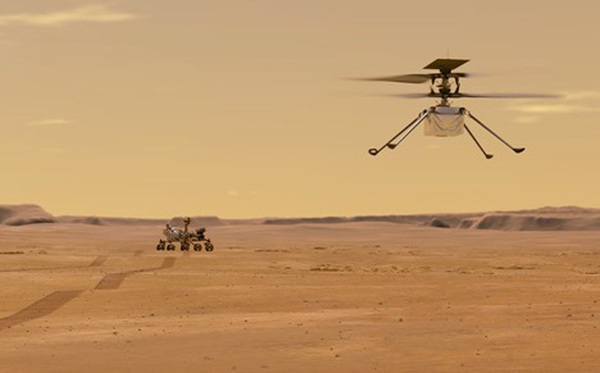
Inventing disruptive technology platforms that make a positive impact and meet social needs is one of Qualcomm’s top goals. Besides, they also believe that strengthening partnerships will promote innovation.
That is why Qualcomm Technologies, including Qualcomm Government Technologies and Qualcomm CDMA Technologies, has been actively collaborating with NASA’s Jet Propulsion Laboratory (JPL) in the development of technologies and solutions to support the spacecraft. Mars helicopter named Ingenuity; made the first powered flight to another planet.
Developed since 2014, the Mars Helicopter project is seen as the culmination of rigorous testing and innovation. The project is meant as a demonstration of JPL technology to show how drones will be able to push the boundaries of space exploration, research and data collection for missions. and design in the future.

The image on Mars was taken by the Perseverance rover. NASA photo.
No technical detail is too small to consider, including the processor responsible for the helicopter’s operation. When JPL approached Qualcomm about testing and expanding Ingenuity’s automation capabilities using Qualcomm Technologies products, they were delighted to be part of the NASA project.
Challenges of the first space flight
The unique challenges to Mars helicopter operation due to the rigors of space challenge the Qualcomm Flight Platform, which is intrinsically completely solvable. It can be said that the biggest difficulty is self-operating; Since the signals take several minutes to arrive, real-time control of the helicopter via remote control is not possible.
Instead, the helicopters had to receive commands for self-operation that were transmitted millions of miles away and were delayed by about 3 to 22 minutes. From there, a further challenge was to ensure that the automated processing system was sufficiently computationally capable and at the same time low in power consumption since most of the power used in the incoming helicopter from a fireplace to keep parts warm at night on Mars. While Qualcomm Flight wasn’t originally designed for space travel, it has powerful autonomous capabilities that the company believes will be a great starting point to tackle some of the challenges ahead. this eye.
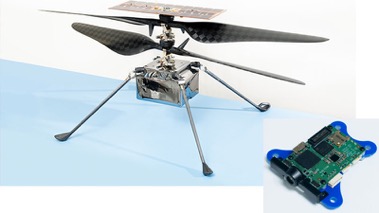
The Qualcomm Flight platform powers Ingenuity helicopters. Image source: NASA/JPL-Caltech
In addition to flexible autonomous functionality, Mars radiation and atmospheric conditions are also important considerations for JPL in determining the right robotic platform choice. Extreme temperatures and cycles of temperature changes can wear out parts very quickly. In addition, some forms of space radiation will damage silicon gradually or suddenly.
Usually, thorough testing is the ideal solution, along with space hardening. Through JPL analysis, NASA was able to determine that certain features of Qualcomm Flight technology would reduce the risk of failure and qualify for the first flight to another planet.
The right set of tools
Qualcomm Flight was originally developed for autonomous flight. The platform focuses on the technological benefits of drones targeting consumer electronics, such as 4K ultra-HD video, heterogeneous mobile computing, navigation through inertial vision and flight assist features – all in an extremely small size and extremely durable.
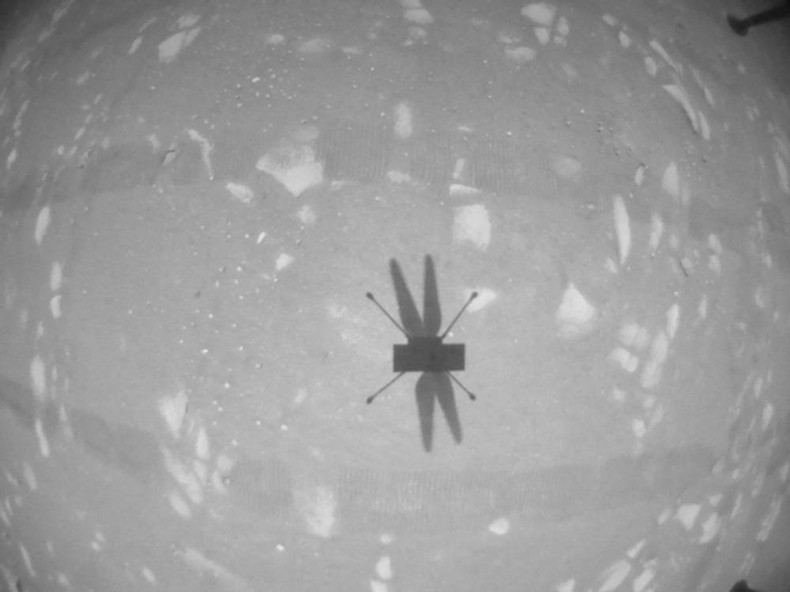
Black and white photo taken by the Ingenuity helicopter itself while flying over Mars on April 22. Photo: NASA.
Meanwhile, these are all features that are needed when JPL considers the limitations of remotely operating a Mars helicopter and the complex algorithms it will need to compute. Helicopter autonomous flight to Mars is important for navigating areas that are not easily accessible to the rover, and opening up new possibilities for space exploration. Explore, capture in high resolution, and travel further at faster speeds.
A key factor in helping Qualcomm get off to a good start in working with JPL was its extensive testing approach to commercial technology. The company has always strived to push the boundaries of emerging technologies, and it’s interesting how that opens up other related opportunities.
This streamlines the integration of Qualcomm Flight into JPL’s project and illustrates how the company’s highly integrated solutions and rigorous testing allow Qualcomm Technologies solutions to be easily accessible. easily adapt to the needs of other industry segments. Qualcomm Flight will not only succeed through rigorous hardware testing at the enterprise’s own lab, but also pass JPL simulation tests for Mars here on Earth.
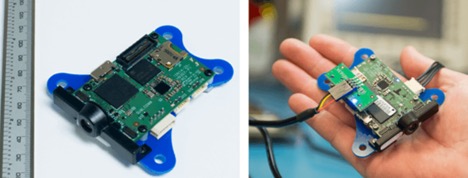
Snapdragon Flight Robot Development Platform.
This project also gave Qualcomm a unique opportunity to test the platform against the extreme conditions that Ingenuity will be exposed to. This experiment also creates valuable lessons that can be applied to future tasks. For example, Qualcomm can quantify to JPL how parts degrade after exposure to radiation and help them simulate the risk. This allows the JPL to decide whether to perform a specific flight mission in the future.
Besides enabling Ingenuity’s automation, Qualcomm Flight is also used in Mars Rover’s communications system. The computing capabilities of Qualcomm Flight on the Rover process the photos taken by the helicopter. This allows both Ingenuity and Rover to work in tandem to collect and prepare the best possible photographs to be sent back to the JPL team on Earth.
Better innovation through collaboration
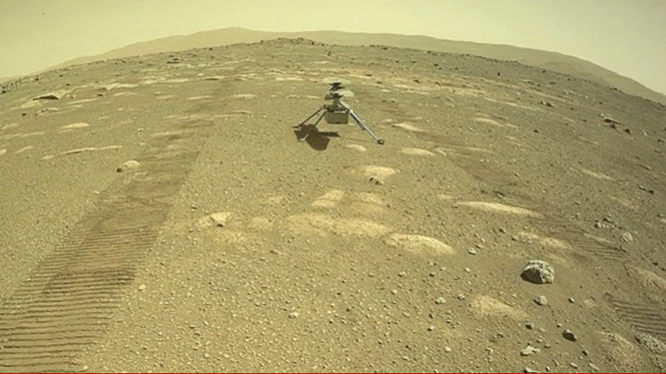
NASA’s helicopter successfully landed on the surface of Mars (Image: Science Alert)
These test results can only be achieved through the close cooperation and trust between Qualcomm Technologies, Qualcomm Government Technologies, and JPL. From the very beginning, highly collaborative engagement and dialogue has allowed stakeholders to learn about the environment in which each operates.
Thanks to a deeply empathetic view of each other plus an extroverted mindset, it was possible to unify the collective mindset to overcome challenges by effectively using Qualcomm Flight for the task. This cross-collaborative relationship involves the gathering of technical, business and contractual teams from the parties involved to ensure a two-way understanding to work towards a solution.

The scene at Jezero crater in the image of the Ingenuity helicopter. (Photo: NASA).
According to Qualcomm, to work with JPL on the Mars Helicopter project is a huge and exciting honor, and a testament to what can happen when technology companies and customers merge. work. This project will shape future technological developments for space exploration through the use of commercial and research technology.
It will also help drive further innovation in robotics at Qualcomm Technologies. Since introducing Qualcomm Flight, the business has introduced other Qualcomm Robot platforms.
Source: Quynhnhu – CAFEBIZ








